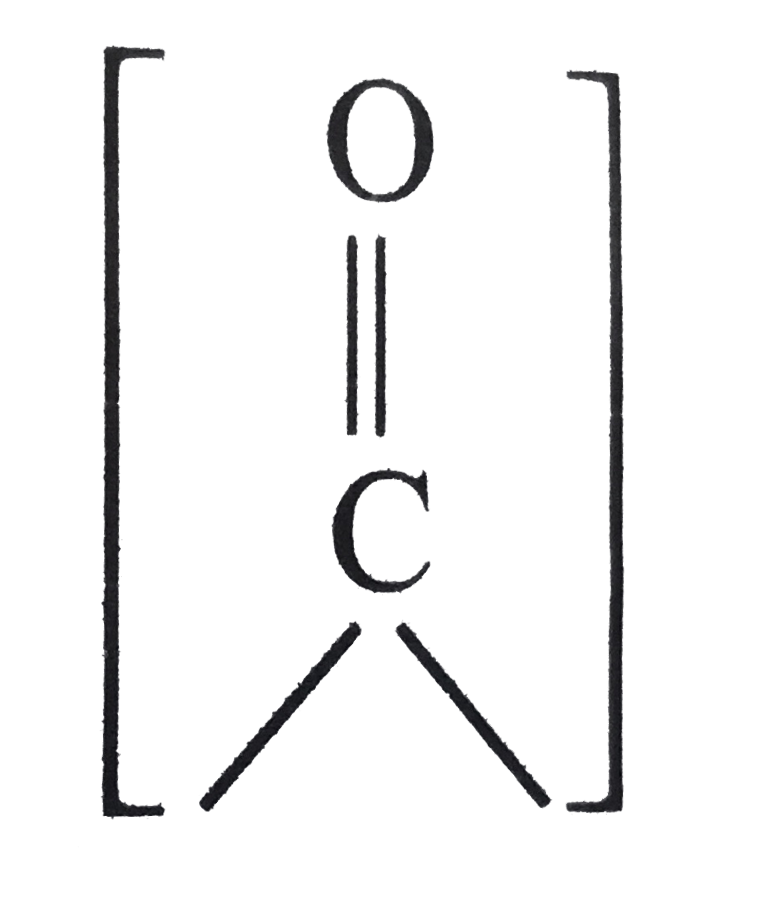Carbonyl group undergoes
electrophilic addition reactions
nucleophilic addition reaction
both
can not predict
The correct Answer is:B
Nucleophillic addition reactionare characteristics reaction of carbonyl compound.
−∣C+δ=O−δ
Topper's Solved these Questions
- BOOK - MARVEL PUBLICATIONCHAPTER - ALDEHYDES,KETONES AND CARBOXYLIC ACIDSEXERCISE - CARBOXYLIC ACIDS198videos
ALDEHYDES,KETONES AND CARBOXYLIC ACIDS
- BOOK - MARVEL PUBLICATIONCHAPTER - ALCOHOL,PHENOLS AND ETHERS EXERCISE - Test your Grasp : Ethers30videos
ALCOHOL,PHENOLS AND ETHERS
- BOOK - MARVEL PUBLICATIONCHAPTER - BIOMOLECULESEXERCISE - TEST YOUR GRASP40videos
BIOMOLECULES
Similar Questions
Presence of carbonyl group in glucose can be shown by its reaction with
View SolutionAldehyde and ketones are specially susceptible susceptible to nucleophile addition because carbonyl group
_E01_579_Q01.png) (due to electronegatvity different between carbon and oxygen).
(due to electronegatvity different between carbon and oxygen).
_E01_579_Q02.png)
Positive charge on carbon makes it reactive towards the nucleophile. This addition is catalysed by acid. Reactivity of carbonyl compound towards nucleophilic addition increases in the electron deficience at carbonyl carbon. Thus, (-I.E.) group increase while (+I.E.) groups decrease the reactivity of carbonyl compound
Carbonyl compounds show nucleophilic addition with:View Solution
Knowledge Check
- Question 1 - Select One
Which of the following functional groups undergoes hydrolysis with alkali to yield an acid group
A−CHOB−CNC−COCH3D−Br - Question 2 - Select One
Carbonyl group in aromatic aldehyde and ketone is
Ao-directingBp-directingCo-and p- directingDm - directing - Question 3 - Select One
(A) Carboxylic acids ⎛⎜ ⎜⎝R−O∣∣C−OH⎞⎟ ⎟⎠ have a carbonyl group but it does not give the test of carbonyl group.
Due to resonance double, the bond character of group is greatly reduced. AIf both (A) and (R) are correct and (R) is the correct explanation of (A).BIf both (A) and (R) are correct but (R) is not correct explanation of (A).CIf (A) is correct but (R) is incorrect.DIf (A) is incorrect but (R) is correct.
group is greatly reduced. AIf both (A) and (R) are correct and (R) is the correct explanation of (A).BIf both (A) and (R) are correct but (R) is not correct explanation of (A).CIf (A) is correct but (R) is incorrect.DIf (A) is incorrect but (R) is correct.
Aldehyde and ketones are specially susceptible susceptible to nucleophile addition because carbonyl group
_E01_580_Q01.png) (due to electronegatvity different between carbon and oxygen).
(due to electronegatvity different between carbon and oxygen).
_E01_580_Q02.png)
Positive charge on carbon makes it reactive towards the nucleophile. This addition is catalysed by acid. Reactivity of carbonyl compound towards nucleophilic addition increases in the electron deficience at carbonyl carbon. Thus, (-I.E.) group increase while (+I.E.) groups decrease the reactivity of carbonyl compound
Which among the following carbonyl compounds is most polar?View SolutionAldehyde and ketones are specially susceptible susceptible to nucleophile addition because carbonyl group
_E01_581_Q01.png) (due to electronegatvity different between carbon and oxygen).
(due to electronegatvity different between carbon and oxygen).
_E01_581_Q02.png)
Positive charge on carbon makes it reactive towards the nucleophile. This addition is catalysed by acid. Reactivity of carbonyl compound towards nucleophilic addition increases in the electron deficience at carbonyl carbon. Thus, (-I.E.) group increase while (+I.E.) groups decrease the reactivity of carbonyl compound
Select the least reactive carbonyl compound for nucleophilic addition:View SolutionIn the carbonyl group, the carbon atom undergoes
View SolutionCarbonyl compounds undergo nucleophilic addition because of :
View SolutionWhich of the following carbonyl compounds undergoes aldol condensation ?
View Solution
